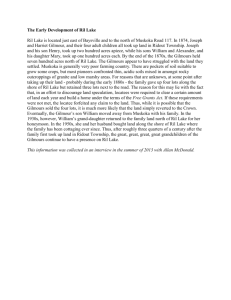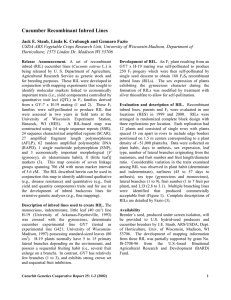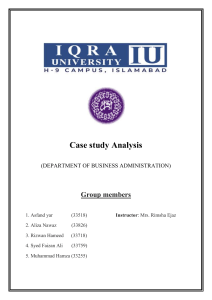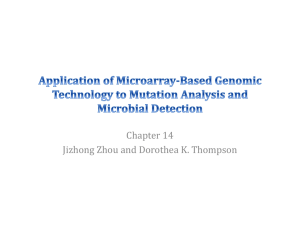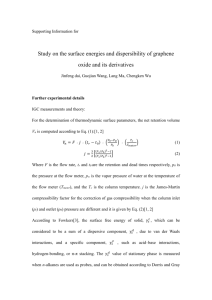Additional file 5
advertisement
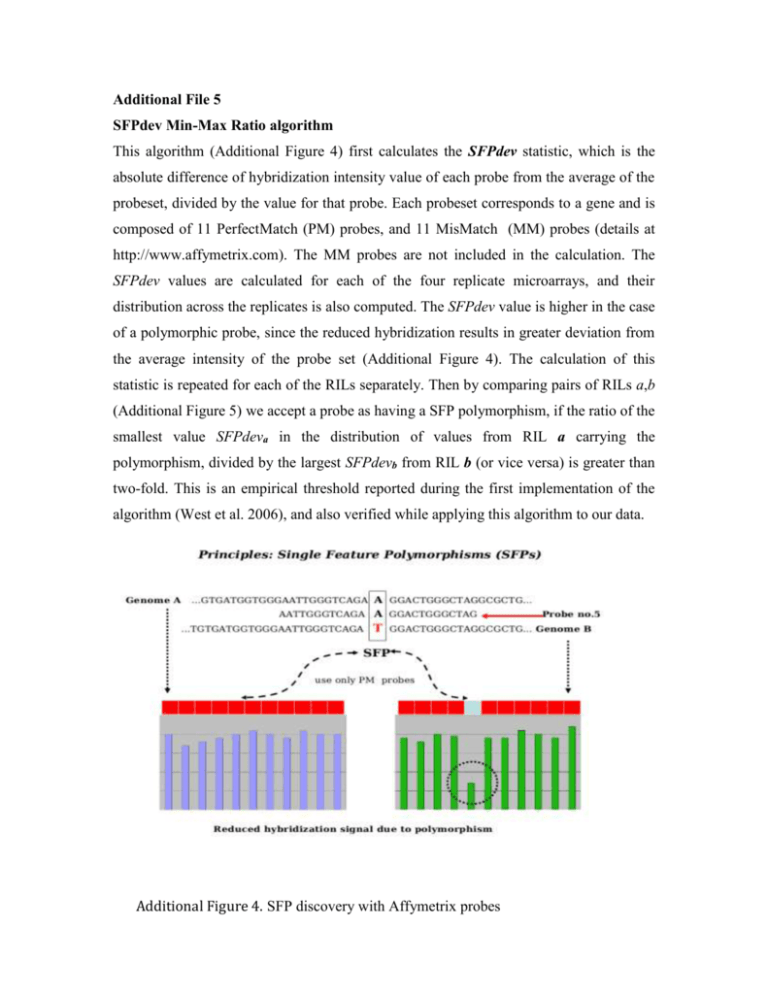
Additional File 5 SFPdev Min-Max Ratio algorithm This algorithm (Additional Figure 4) first calculates the SFPdev statistic, which is the absolute difference of hybridization intensity value of each probe from the average of the probeset, divided by the value for that probe. Each probeset corresponds to a gene and is composed of 11 PerfectMatch (PM) probes, and 11 MisMatch (MM) probes (details at http://www.affymetrix.com). The MM probes are not included in the calculation. The SFPdev values are calculated for each of the four replicate microarrays, and their distribution across the replicates is also computed. The SFPdev value is higher in the case of a polymorphic probe, since the reduced hybridization results in greater deviation from the average intensity of the probe set (Additional Figure 4). The calculation of this statistic is repeated for each of the RILs separately. Then by comparing pairs of RILs a,b (Additional Figure 5) we accept a probe as having a SFP polymorphism, if the ratio of the smallest value SFPdeva in the distribution of values from RIL a carrying the polymorphism, divided by the largest SFPdevb from RIL b (or vice versa) is greater than two-fold. This is an empirical threshold reported during the first implementation of the algorithm (West et al. 2006), and also verified while applying this algorithm to our data. Additional Figure 4. SFP discovery with Affymetrix probes Additional Figure 5. SFPdev Min-Max Ratio algorithm RIL Bimodal Distributions algorithm. This algorithm is similar to K-means clustering with K = 2. In summary, the RIL Bimodal Distributions (Additional Figure 6) algorithm first calculates the absolute values of probe intensity differences dijk (probe i, probeset j, RIL k), from the average of each probeset. Similarly with the SFPdev, only PM probes are included in the calculation. In the next step, the algorithm computes the distribution of each dijk value across all the individuals of the RIL population. The median Mij is initially used to split the distribution into an upper (u) and lower (l) subsets (Additional Figure 7). The averages lavg , uavg of the l and u subsets respectively, are the seeding centers for the K-means clustering. Then the algorithm iterates in the same manner for eight times , but instead of the Mij, it uses the average (lavg + uavg)/2 for splitting again into u,l subsets. After all iterations, the dijk values settle into a bimodal distribution, with each mode corresponding to a K-means cluster. These steps are repeated for probes in all the probesets, measured in the expression profile of each individual of the population. In order to assess significant separation between the two distribution modes (or otherwise the two clusters), we use as metric the peak separation ps = (Al – Au)/√(Sl 2/nl + Su2/nu) (Al and Au are distribution averages for the u,l modes respectively, standard deviations Sl and Su, sample sizes nl and nu). The algorithm also computes the dij values (averaged across replicate microarrays) for the PI407162 and V71-370 parental data. For polymorphic probes, dijk values for the individuals of the RIL population are expected to cluster around the parental dij, under the two modes of the distribution (Additional Figure 7). Since the RIL population was created by the cross of the genetically distant PI407162 and V71-370 soybean lines, the two modes originate due to the different parental alleles inherited to the RIL progeny. For each SFP probe, RIL individuals are assigned a genotype based on their clustering around one of the parental values (Additional Figure 7). Additional Figure 6. Details of the RIL Bimodal Distributions algorithm PI407162 V71-370 Additional Figure 7. Genotyping RILs based on parental genotypes to the bimodal distribution

